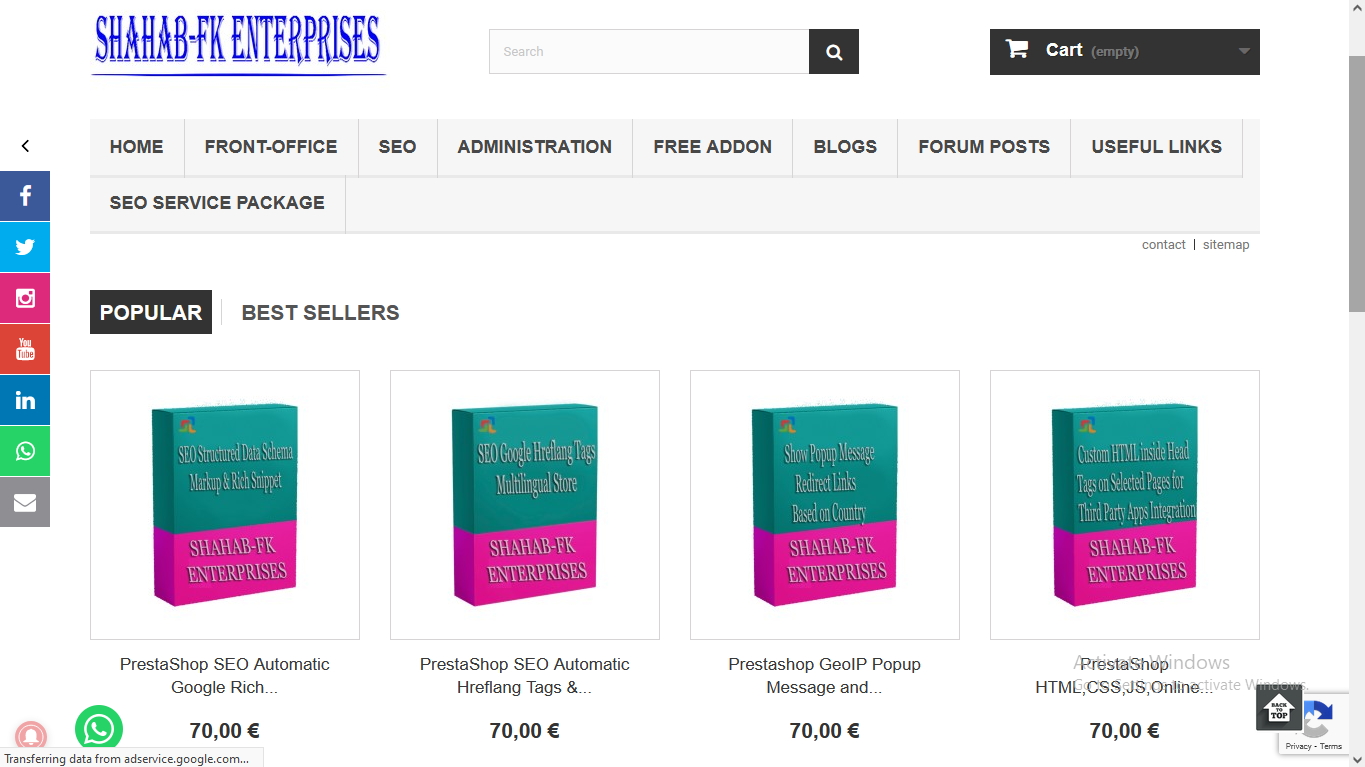Improving the speed of your PrestaShop store is essential for providing a better user experience and boosting your search engine rankings. Here are some tips and techniques to help you optimize the speed of your PrestaShop website:
- Use a Fast Hosting Provider: Choose a reliable and fast web hosting provider. A high-performance hosting environment can significantly impact your website’s speed. Consider using a VPS (Virtual Private Server) or dedicated server for better performance.
- Enable PrestaShop Caching: PrestaShop has built-in caching features that can significantly improve page load times. Go to your PrestaShop admin panel, navigate to “Advanced Parameters” > “Performance,” and enable caching options such as CCC (Combine, Compress, and Cache) and Smart Cache for CSS/JS.
- Optimize Images: Large images can slow down your website. Use image optimization tools or plugins to compress and resize images without compromising quality. Consider using the WebP format for images, as it offers excellent compression and quality.
- Minify CSS and JavaScript: Minify your CSS and JavaScript files to reduce their size. You can use PrestaShop’s built-in CCC (Combine, Compress, and Cache) option or use external tools to minify your code.
- Use a Content Delivery Network (CDN): Implement a CDN to distribute your website’s static assets (images, CSS, JavaScript) across multiple servers worldwide. This reduces server load and decreases page load times for visitors from various locations.
- Upgrade to the Latest PrestaShop Version: Ensure that you are using the latest version of PrestaShop, as newer versions often include performance improvements and bug fixes.
- Optimize Database: Regularly optimize your database by cleaning up unused data, such as expired orders, customer logs, and abandoned carts. You can use database optimization tools or modules for PrestaShop.
- Limit the Number of Modules: Excessive modules can slow down your website. Remove or disable any unnecessary modules or extensions. Choose lightweight and well-coded modules for essential functionalities.
- Enable GZIP Compression: Enable GZIP compression in your server’s configuration to reduce the size of data sent to visitors’ browsers, thus speeding up page loading.
- Reduce Server Requests: Minimize the number of HTTP requests by combining CSS and JavaScript files, reducing the use of external scripts, and optimizing your theme’s design.
- Use Lazy Loading: Implement lazy loading for images and videos, which defers the loading of offscreen content until it’s needed, improving initial page load times.
- Optimize TTFB (Time to First Byte): A fast TTFB is crucial for perceived website speed. Optimize your server’s response time by using server-side caching and tuning your server configuration.
- Monitor and Analyze Performance: Use tools like Google PageSpeed Insights, GTmetrix, or Pingdom to regularly test your website’s performance and identify areas for improvement.
- Regularly Update and Maintain: Keep your PrestaShop installation, themes, and modules up to date. Developers often release updates that include performance enhancements and bug fixes.
- Consider a Fast Theme: Choose a lightweight and well-optimized PrestaShop theme. Some themes are designed for speed and performance.
Remember that website speed optimization is an ongoing process. Continuously monitor your website’s performance and make adjustments as needed to ensure a fast and responsive online store for your visitors.

